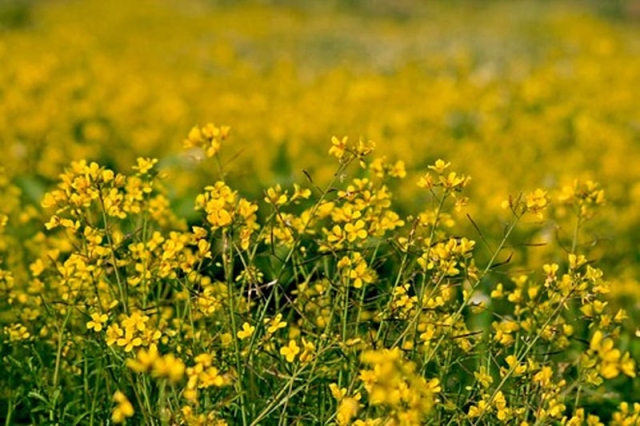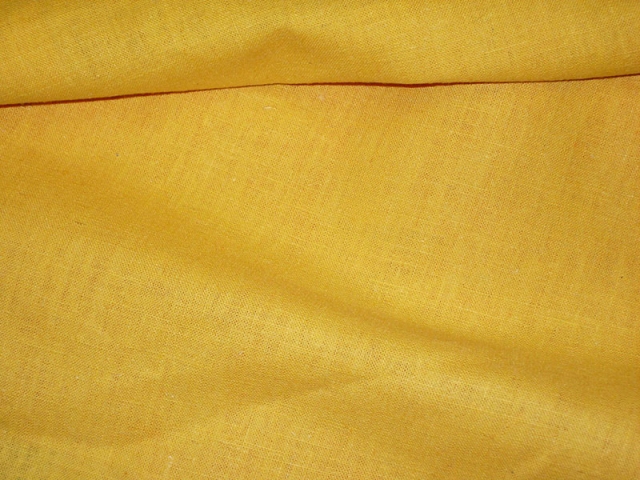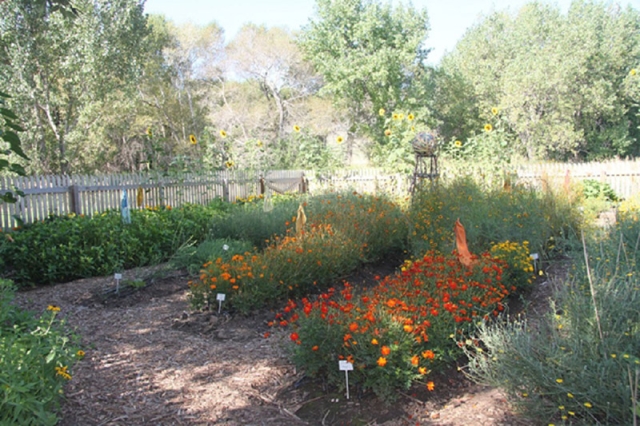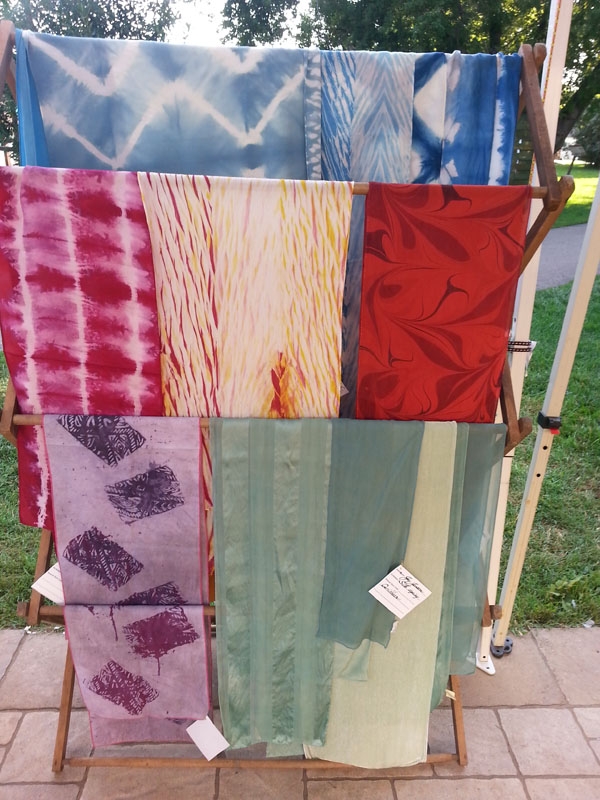Golden Opportunity: Botanical Illustration
Golden Opportunity: Botanical Illustration features artwork from the students and faculty of the Gardens’ School of Botanical Art & Illustration. This exhibition is a rumination on yellow plants that boast or create yellow hues—from lemons to lilies to sunflowers. Alongside these illustrations is a closer look into the plants that are used to create yellow dyes. Processes of producing dyes from plant materials have existed for centuries and often can be easily done at home. Read on for a quick history of yellow, information about the dyeing process, and instructions on how to create your own dyes at home.

"Yellow flowers" by Fr Antunes is licensed under CC BY 2.0

"Yellow Linen" by BuyandCreate.com is licensed under CC BY-SA 2.0
A Brief Background
In plants, yellow is produced by natural pigments such as carotenoids and flavonoids. Carotenoids are important for photosynthesis because they help gather light and protect chloroplasts from sun damage. These pigments also attract pollinators and/or possible seed dispersers, making them highly important to a plant’s survival.
Prior to 1856, only natural dyes from animal, mineral, and plant sources were used rather than the common synthetic dyes of today. Humans have used these natural dyes for body paints, cosmetics, pottery and baskets.
Denver Botanic Gardens Chatfield Farms is home to the Janice Ford Memorial Dye Garden, which includes both perennials and annuals producing dyes in a variety of colors such as indigo, black hollyhocks, dyers chamomile, weld, Hopi sunflowers and madders. Each year during the growing season, classes and workshops teach people the dye process. Find classes and workshops on our calendar.
The Process
Gathering Plant Material
Plants used for dyeing come from a variety of sources. They can be grown in a backyard or sourced in the wild, but make sure you know the laws and protocols first.
There are many resources and books for those interested in learning the dye process, including how to incorporate dye plants in a home garden. Textiles are dyed with fresh materials when they are available or in season, but dried plant material can also provide rich colors for dyeing during winter months.

The Janice Ford Memorial Dye Garden at Chatfield Farms

Naturally dyed silk scarves at Chatfield Farms by the Rocky Mountain Weavers Guild
Dyeing
There is no single way to dye fibers with plant material, but there are similarities across the range of techniques used. Below is one of several dyeing processes used by the Rocky Mountain Weavers Guild.
- Choosing a fiber to dye: This can be animal fiber such as wool or silk or plant fiber such as linen, cotton, hemp and more. Fibers can be in the form of yarn or fabric.
- Cleaning the fibers: This is also known as “scouring.” Scouring is important because dirt particles might prevent dye from penetrating the fibers, which can result in uneven coloration. Dish soap or a scouring agent can be used to wash fibers.
- Wetting the fibers: Fibers must be soaked overnight to absorb the dye.
- Mordanting: Dyes are bound to the fabric using chemicals known as mordants. Mix the mordant with the fibers in heated water prior to adding the plant material.
- Alum (potassium aluminum sulfate) is a popular mordant, generally considered safe and nontoxic.
- Not all dyes need a mordant. Some dyes, like safflower, turmeric and indigos, are vibrant enough to dye without mordants. Others, such as madder root and marigolds, require preparation with a mordant prior to dyeing.
- Steeping the plant material: Steep plant material in simmering water, like steeping tea.
- Dying the fibers: Place fibers in steeped, simmering water for at least an hour. Remove the dyed fiber from the water and allow to dry.
- Rinsing the fibers: Rinse the dried dyed fabric in cold water to remove any excess material or dye.
- Enjoy!
Watch this video to dye T-shirts at home with turmeric!
Add new comment